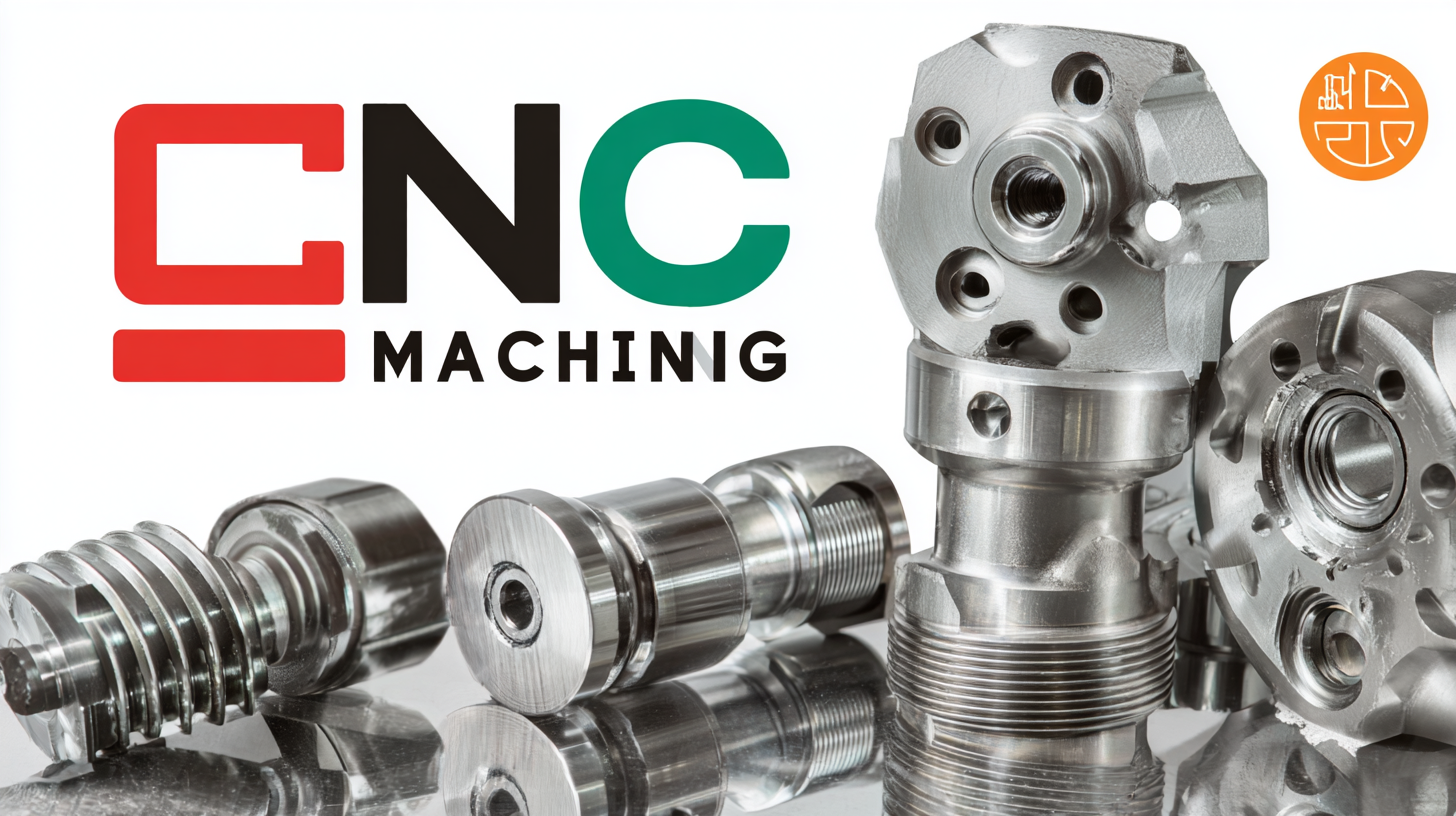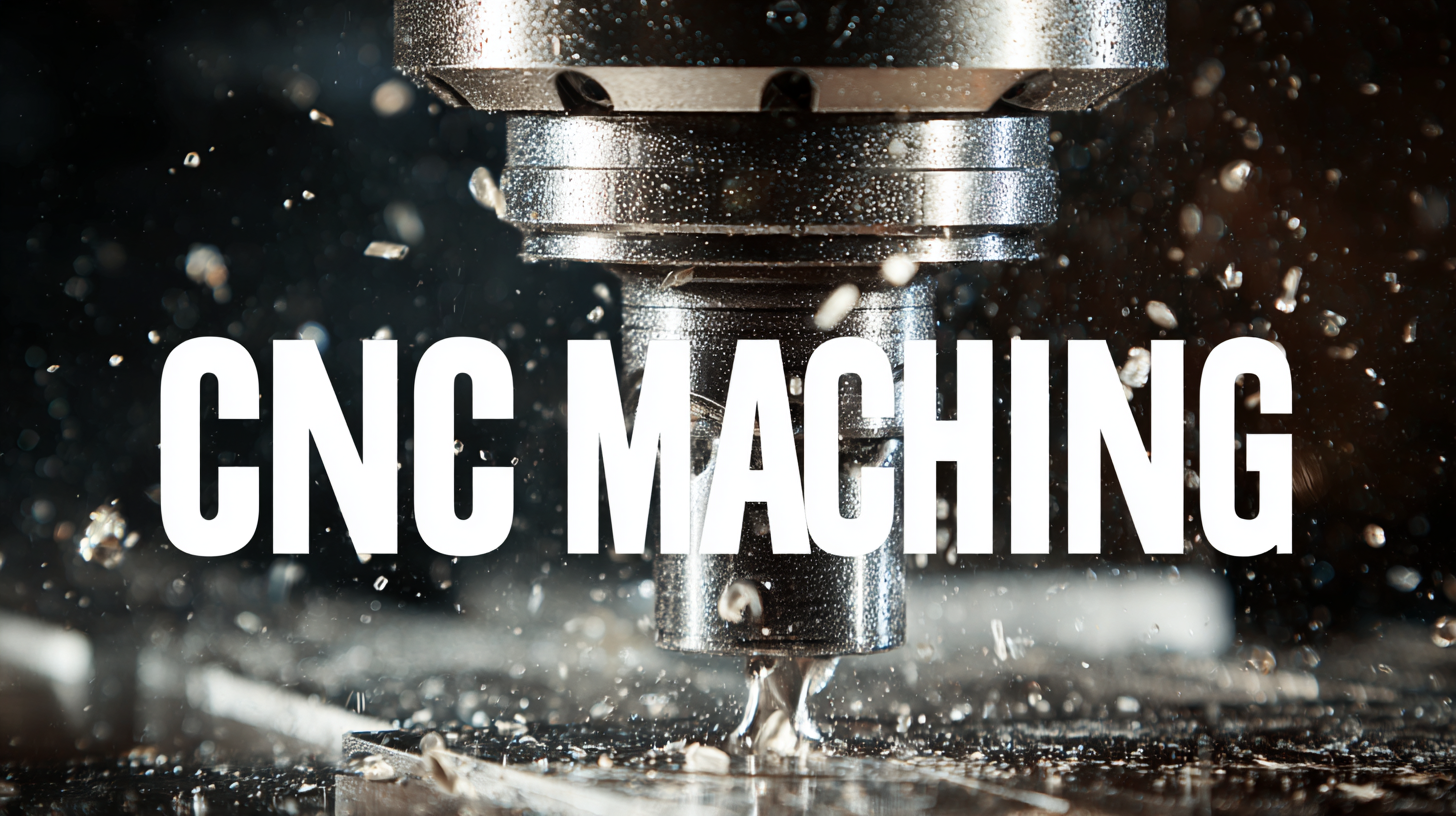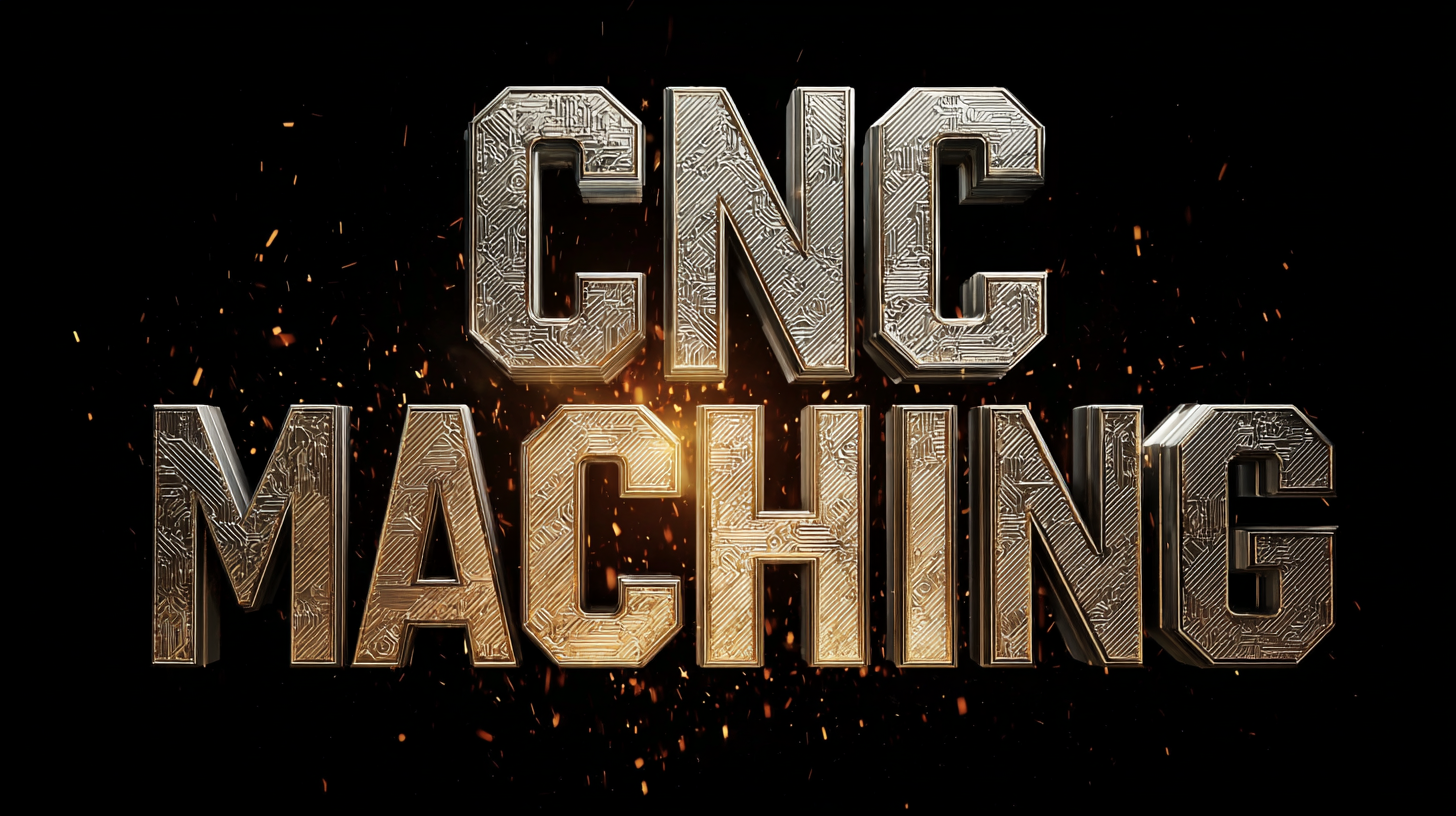Understanding the Characteristics and Applications of Various CNC Machining Types: A Comprehensive Guide for Global Buyers
As we move towards 2025, the landscape of CNC machining is set to undergo significant transformations driven by technological advancements and increasing demand across various industries.
According to a recent report by MarketsandMarkets, the global CNC machining market is projected to reach USD 100 billion by 2025, growing at a CAGR of 5.2% from 2020 to 2025.
This substantial growth is influenced by the rising trends in automation and Industry 4.0, which are reshaping manufacturing processes and enhancing productivity.
Understanding the nuances of different CNC machining types is crucial for global buyers to make informed decisions that align with their operational needs and strategic goals.
This comprehensive guide will delve into the characteristics, advantages, and diverse applications of various CNC machining technologies, providing invaluable insights for stakeholders navigating the evolving industry landscape.
Key CNC Machining Types: An Overview for Global Buyers
CNC machining has become a crucial aspect of modern manufacturing, enabling precision and efficiency across various industries. Key types of CNC machining include
milling,
turning, and
laser cutting,
each serving specific applications and requirements. Understanding these types allows global buyers to make informed decisions tailored to their manufacturing needs and ensure optimal production processes.
When considering CNC machining, buyers should evaluate their projects based on size, complexity, and material requirements. For instance,
laser cutting excels in handling intricate designs, while
CNC milling is ideal for producing parts with precision dimensions. Additionally, keeping an eye on market trends can provide insights into future technologies and innovations that may impact production capabilities.
Tip: Stay updated on the latest manufacturing tools and technologies to enhance your competitive edge. Engaging with industry reports can help you identify growth areas and emerging CNC machining techniques.
Tip: Regularly assess your machining processes and invest in training for your workforce. This can boost efficiency and ensure that your team is well-versed in the latest practices within the fast-evolving manufacturing landscape.
Emerging Trends in CNC Machining for 2025 and Beyond
As we look towards 2025 and beyond, the landscape of CNC machining is evolving rapidly, driven by technological advancements and changing market demands. One of the most significant trends is the integration of artificial intelligence (AI) and machine learning into CNC systems. These technologies enhance precision, reduce downtime, and optimize manufacturing processes by predicting failures and adjusting parameters in real-time. This shift is empowering manufacturers to achieve not only higher efficiency but also greater customization in their product offerings.
Tips for Buyers: When considering CNC machining services, look for providers that emphasize their use of AI-driven technologies. It's essential to ask about their predictive maintenance practices and how they leverage data analytics to improve machining outcomes.
Another emerging trend is the growing emphasis on sustainability within CNC machining. Companies are increasingly adopting eco-friendly practices, such as waste reduction and energy-efficient machine operations. Sustainable machining processes not only appeal to environmentally conscious consumers but also help businesses reduce their operational costs significantly.
Tips for Buyers: Prioritize suppliers who advocate for sustainable practices. Inquire about their waste management strategies and energy consumption metrics to ensure your project aligns with current sustainability goals.
Advantages and Applications of Precision CNC Machining Techniques
Precision CNC machining plays a pivotal role in modern manufacturing, particularly when it comes to creating lightweight structures in industries such as aerospace and automotive. As highlighted in recent studies, CNC machining techniques are increasingly utilized for producing components from advanced materials like carbon fiber and titanium. These materials not only enhance performance but also contribute to weight reduction, crucial for improving fuel efficiency and overall sustainability in these sectors. Research indicates that the market for CNC machines is projected to grow significantly, driven by advancements in machining technology and rising demand for lightweight components.
Moreover, the integration of sophisticated toolpath generation methods based on data models is transforming CNC milling operations. The application of point cloud models streamlines the production process, enabling manufacturers to achieve higher precision and efficiency. Additionally, the focus on surface roughness and its measurement has become vital, as it directly impacts the functionality and aesthetic quality of machined parts. This attention to detail is essential in meeting industry standards and client expectations, further emphasizing the advantages of precision CNC machining in delivering superior products across various applications.
Understanding the Characteristics and Applications of Various CNC Machining Types
| CNC Machining Type |
Key Characteristics |
Advantages |
Typical Applications |
| CNC Milling |
High precision, versatile, able to handle complex parts. |
High material removal rates, flexibility in design. |
Aerospace, automotive, medical parts manufacturing. |
| CNC Turning |
Ideal for cylindrical parts, effective for high volume production. |
Excellent surface finish, reduced setup times. |
Spindles, shafts, and fittings in various industries. |
| CNC Plasma Cutting |
Fast cutting of thick materials, effective for metal sheets. |
High speed, cost-effective for large sheets. |
Fabrication, automotive body panels, industrial machinery. |
| CNC Wire EDM |
Excellent precision on hard materials, intricate designs. |
Minimal material waste, ideal for tight tolerances. |
Molds, dies, and specialized tools production. |
| CNC Laser Cutting |
High-speed cutting, clean edges, and less kerf. |
Versatile for various materials, including metal and plastic. |
Signage, electronics enclosures, and intricate designs. |
Comparative Analysis of CNC Machining Methods: Choosing the Right Type
CNC machining has evolved into several specialized methods, each suited to different applications and materials. A comparative analysis of these methods reveals key differences that can influence a buyer's choice. For instance, traditional CNC milling is excellent for creating complex geometries, with its market size expected to reach $24.86 billion by 2027, according to a report by Grand View Research. This method is particularly favored for its versatility across ferrous and non-ferrous materials.
On the other hand, CNC turning is increasingly popular for cylindrical or tubular parts. A study by MarketsandMarkets estimates that the CNC turning market will grow at a compound annual growth rate (CAGR) of 4.8% from 2021 to 2026. This method excels in precision and efficiency, making it a favorite in industries such as automotive and aerospace where dimensional accuracy is critical. Additionally, emerging techniques like CNC wire EDM (Electrical Discharge Machining) are rising in demand for their ability to process hard materials and provide intricate detail without mechanical stress, making them ideal for mold making and tooling applications. Recognizing these differences allows global buyers to make informed decisions tailored to their production needs.

Future Innovations in CNC Machining: What Buyers Need to Know
As the CNC machining industry continues to evolve, future innovations promise to significantly enhance productivity and precision for global buyers. According to a report by MarketsandMarkets, the CNC machine market is projected to grow from USD 69.10 billion in 2022 to USD 102.88 billion by 2026, driven by advancements in technology such as automation and real-time monitoring. These innovations not only improve operational efficiency but also minimize downtime, making CNC machining solutions more attractive to manufacturers across various sectors.
One key trend is the integration of AI and machine learning in CNC operations. These technologies enable machines to learn from production data, optimizing machining processes and reducing waste. A study by the International Journal of Advanced Manufacturing Technology highlights that implementing predictive maintenance techniques can reduce machine downtime by up to 30%. Additionally, advancements in 5-axis machining and additive manufacturing are expanding the capabilities of CNC machines, allowing them to produce highly complex geometries with greater ease. For buyers looking to stay competitive, understanding these trends and their implications will be crucial in making informed purchasing decisions in the coming years.
Understanding CNC Machining Types: A Comparative Analysis
This bar chart represents the percentage of applications for various CNC machining types across different industries. Milling leads with 35%, followed by Turning at 25%, and other types such as Drilling and EDM also have significant usage in the machining market.
 English
English English
English Español
Español Português
Português русский
русский Français
Français 日本語
日本語 Deutsch
Deutsch tiếng Việt
tiếng Việt Italiano
Italiano Nederlands
Nederlands ภาษาไทย
ภาษาไทย Polski
Polski 한국어
한국어 Svenska
Svenska magyar
magyar Malay
Malay বাংলা ভাষার
বাংলা ভাষার Dansk
Dansk Suomi
Suomi हिन्दी
हिन्दी Pilipino
Pilipino Türkçe
Türkçe Gaeilge
Gaeilge العربية
العربية Indonesia
Indonesia Norsk
Norsk تمل
تمل český
český ελληνικά
ελληνικά український
український Javanese
Javanese فارسی
فارسی தமிழ்
தமிழ் తెలుగు
తెలుగు नेपाली
नेपाली Burmese
Burmese български
български ລາວ
ລາວ Latine
Latine Қазақша
Қазақша Euskal
Euskal Azərbaycan
Azərbaycan Slovenský jazyk
Slovenský jazyk Македонски
Македонски Lietuvos
Lietuvos Eesti Keel
Eesti Keel Română
Română Slovenski
Slovenski



